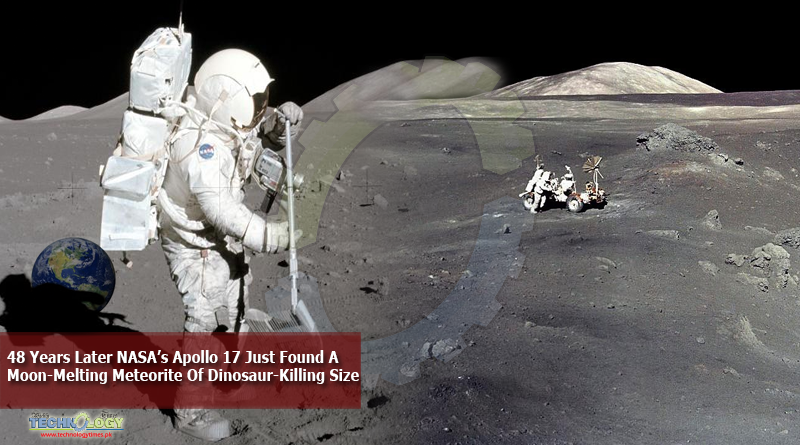Was the Moon struck by the kind of Melting Meteorite that ended the reign of the dinosaurs on Earth?That event 66 million years ago saw a 6-9 miles/10-15 kilometers-wide meteorite or comet strike Earth close to Mexico’s Yucatán Peninsula and leave a scar now known as Chicxulub crater.

The same thing may have happened on the Moon according to a new paper published in the journal Nature Astronomy by a group of international scientists led by the Royal Ontario Museum (ROM).MORE FROM FORBES’Super Flower Moon’ Up Close: How To Easily Find Craters And ‘Seas’ On This Week’s Full MoonBy Jamie Carter
What’s the evidence for a massive meteorite impact on the Moon?
Today In: Science
- This 90 Year Old Math Problem Shows Why We Need Quantum Computers
- Montreal Shatters May Temperature Record With A 98°F High On Wednesday
- Genes And Musical Ability Both Affect How People Hear Tonal Languages
Moonrock from 1972’s Apollo 17 mission. New research of a unique grain of baddeleyite collected by NASA astronaut-geologist Jack Schmitt and astronaut Gene Cernan has uncovered evidence of cubic zirconia—a mineral used as a substitute for diamond in jewellery—that only forms at incredibly high temperatures of over 2,300 °C/4,300 °F.
PROMOTEDUNICEF USA BRANDVOICE | Paid ProgramThe UNICEF USA Bridge Fund & Social Impact Investing: The Time Is NowCivic Nation BRANDVOICE | Paid ProgramThe Journey To College In The Age Of COVID-19Grads of Life BRANDVOICE | Paid ProgramThe Shared Value Of Inclusive Economic Recovery
That kind of heat could only come from the melting of the outer layer of a planet or moon in a large impact event, say the authors.
Aged at 4.3 billion years, the research suggests that a large impact event must have had a role in forming new rocks on the early Moon.
This could revolutionize what we know about the geology of the Moon, and would help explain the complex range of rocks on the lunar surface.
“Unimaginably violent meteorite impacts helped to build the lunar crust, not only destroy it,” said Dr. James Darling, a reader at the School of the Environment Melting Meteorite, Geography & Geosciences at the University of Portsmouth in the U.K., a co-author of the study.MORE FROM FORBESThe Sun Is Asleep. Deep ‘Solar Minimum’ Feared As 2020 Sees Record-Setting 100-Day SlumpBy Jamie Carter
Why was this moonrock sample special?
“When first looking at this rock, I was amazed by how differently the minerals look compared to other Apollo 17 samples,” said Dr. Ana Cernok, Hatch Postdoctoral Fellow at the ROM, and co-author of the study. “Although smaller than a millimetre, the baddeleyite grain that caught our attention was the largest one I have ever seen in Apollo samples.”
Twelve NASA astronauts brought back a total of 842 pounds/382 kilograms of moon rock and soil on the six Apollo missions that landed on the Moon.
“This small grain is still holding the evidence for formation of an impact basin that was hundreds of kilometres in diameter,” said Cernok. “This is significant, because we do not see any evidence of these old impacts on Earth.”MORE FROM FORBESHow To See A Bright ‘Parade Of Planets Melting Meteorite’ From Your Home: What You Can See In The Night Sky This WeekBy Jamie Carter
Where did Apollo 17 land?
A geologically fascinating place, it’s also where SpaceIL’s Beresheet lunar lander crashed into on April 11, 2019 after a failed landing attempt.
Last November, NASA scientists opened an untouched rock and soil sample from the Moon returned to Earth on Apollo 17.
“Rocks on Earth are constantly being recycled, but the Moon doesn’t exhibit plate tectonics or volcanism, allowing older rocks to be preserved,” said Dr. Lee White, Hatch Postdoctoral Fellow at the ROM. “By studying the Moon, we can better understand the earliest history of our planet because if large, super-heated impacts were creating rocks on the Moon, the same process was probably happening here on Earth.”
Originally Publish at: https://www.forbes.com/
